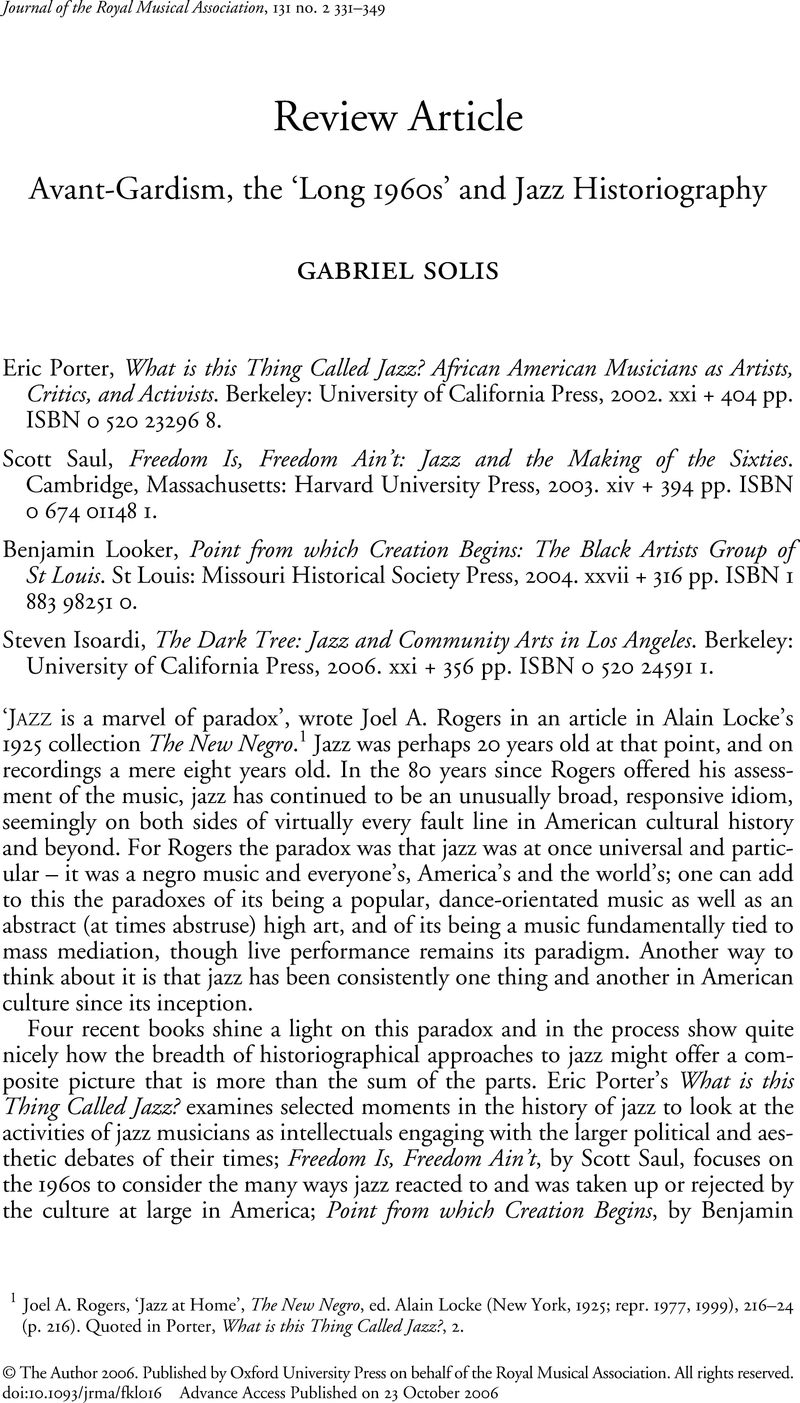Published online by Cambridge University Press: 01 January 2020

1 Rogers, Joel A., ‘Jazz at Home’, The New Negro, ed. Alain Locke (New York, 1925; repr. 1977, 1999), 216–24 (p. 216). Quoted in Porter, What is this Thing Called Jazz?, 2.Google Scholar
2 Henry Louis Gates, Jr, The Signifyin(g) Monkey: A Theory of African American Literary Criticism (New York, 1988).Google Scholar
3 A number of issues underlie this aesthetic problem. On the one hand, there is an aesthetic and historiographical tradition that lauds the supposedly universal and denigrates as ‘lesser’ the particular in music, so that the German tradition of roughly 1750–1900 could be ‘music’ and anything else from the time – Czech, English, French and so forth – could be ‘national traditions’. This eerily echoes Hegel's description of the progression of human history from savagery to civilization shown in the ranking of societies from Native American through African, ‘Oriental’, Roman and French, to the perfection of the Teutonic race (see Georg Wilhelm Friedrich Hegel, Philosophy of History (1899), trans. John Sibree, New York, 1956). In America, where race (and racism) is ever-present, the dialectic between universal and particular is often driven by racist assumptions when it comes to black artists.Google Scholar
4 Scott DeVeaux, The Birth of Bebop: A Social and Musical History (Berkeley, CA, 1997), 1.Google Scholar
5 Eric Lott, ‘Double V, Double Time: Bebop's Politics of Style’, Jazz among the Discourses, ed. Krin Gabbard (Durham, NC, 1995), 243–55.Google Scholar
6 Langston Hughes, The Best of Simple (New York, 1961), 117. Quoted in Porter, What is this Thing Called Jazz?, 90.Google Scholar
7 Frank Kofsky, Black Nationalism and the Revolution in Music (New York, 1970); Amiri Baraka (LeRoi Jones), Blues People: Negro Music in White America (New York, 1963).Google Scholar
8 See, for instance, ‘What Jazz Is – and Isn't’ and ‘Wynton vs. Herbie: The Purist and the Crossbreeder Duke it Out’, both reprinted in Keeping Time: Readings in Jazz History, ed. Robert Walser (New York, 1999), 334–8 and 339–50.Google Scholar
9 David Ake, Jazz Cultures (Berkeley, CA, 2002), 146–76.Google Scholar
10 For a glimpse of Coltrane's literal beatification, the reader is directed to the St John Coltrane African Orthodox Church in San Francisco, California, <www.saintjohncoltrane.com> and <www.coltranechurch.org>. and
11 See Burns, Ken, Jazz (Burbank, CA, 2000), episode 10.Google Scholar
12 Ekkehard Jost, Free Jazz (Graz, 1974); Kofsky, Black Nationalism (see above, note 7).Google Scholar
13 Iain Anderson provides a broader discussion of avant-garde jazz musicians and the development of nonprofit funding models in ‘Jazz Outside the Marketplace: Free Improvisation and Nonprofit Sponsorship of the Arts, 1965–1980‘, American Music, 20 (2002), 131–67.Google Scholar
14 The book would also benefit from a useful index. The index as it stands is woefully inadequate, totalling only four and a half pages for a roughly 300-page book.Google Scholar
15 Ake, Jazz Cultures (see above, note 9); Sherrie Tucker, Swing Shift: ‘All-Girl’ Bands of the 1940s (Durham, NC, 2000); Guthrie Ramsey, Jr, Race Music (Berkeley, CA, 2003); Jazz among the Discourses, ed. Gabbard (see above, note 5).Google Scholar